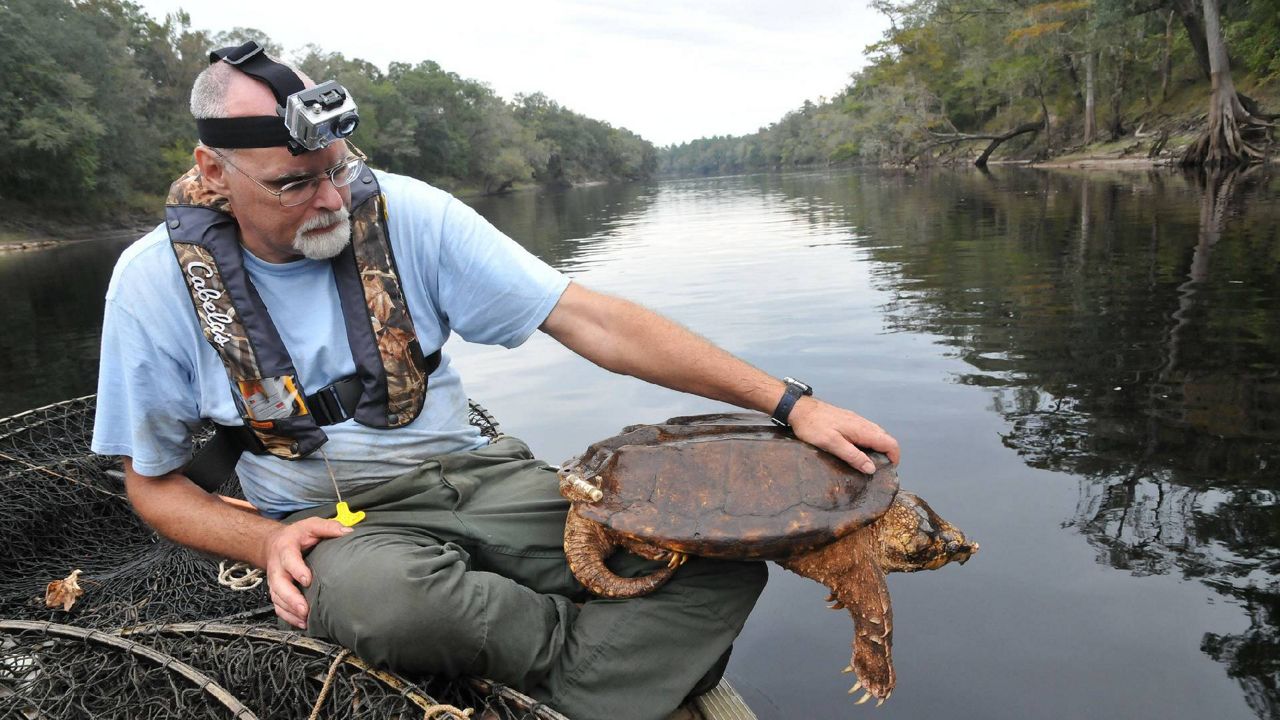Biologists need public sightings of alligator snapping turtles so they can identify specific threats that species face when they come out of the water, according to a post from the Florida Fish and Wildlife Conservation Commission (FWC).
Alligator snapping turtles are the largest freshwater turtle in North America. Often confused with common snapping turtles, the alligator snapping turtles have a prominent hooked beak, a very long tail and three distinctive ridges of raised scales on the back of a rough, brown shell. Males can reach about 29 inches in length, whereas females are about 22 inches long.
Their diet primarily consists of different plants and animals, such as fish, musk turtles and acorns.
Courting occurs from February to April, with nesting occurring from late April into the middle of May in western Florida. The species prefers to construct their nests in sandy soils within 20 meters of water, although they sometimes construct the nests as far as 200 meters.
The FWC states that the alligator snapping turtle can be found in rivers, lakes, backwater swamps and periodically in brackish water systems (mixture of fresh and salt water) from Florida to Texas and northern Illinois.
The species is currently threatened from trot and bush lines, chemical pollution from industry and farms and siltation from roads.
The public is encouraged to message the FWC with detailed location information, date of the observation and a photo if any alligator snapping turtles were found.



